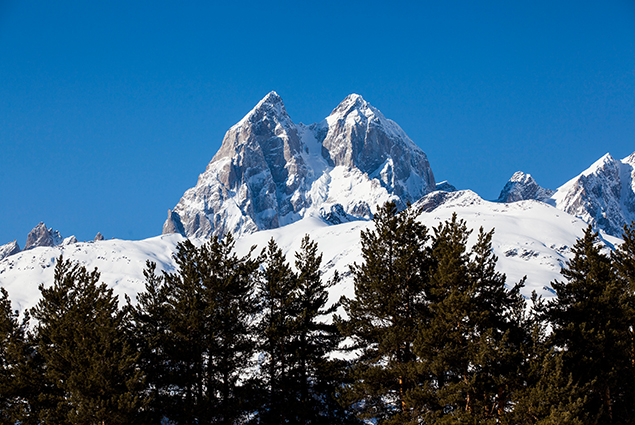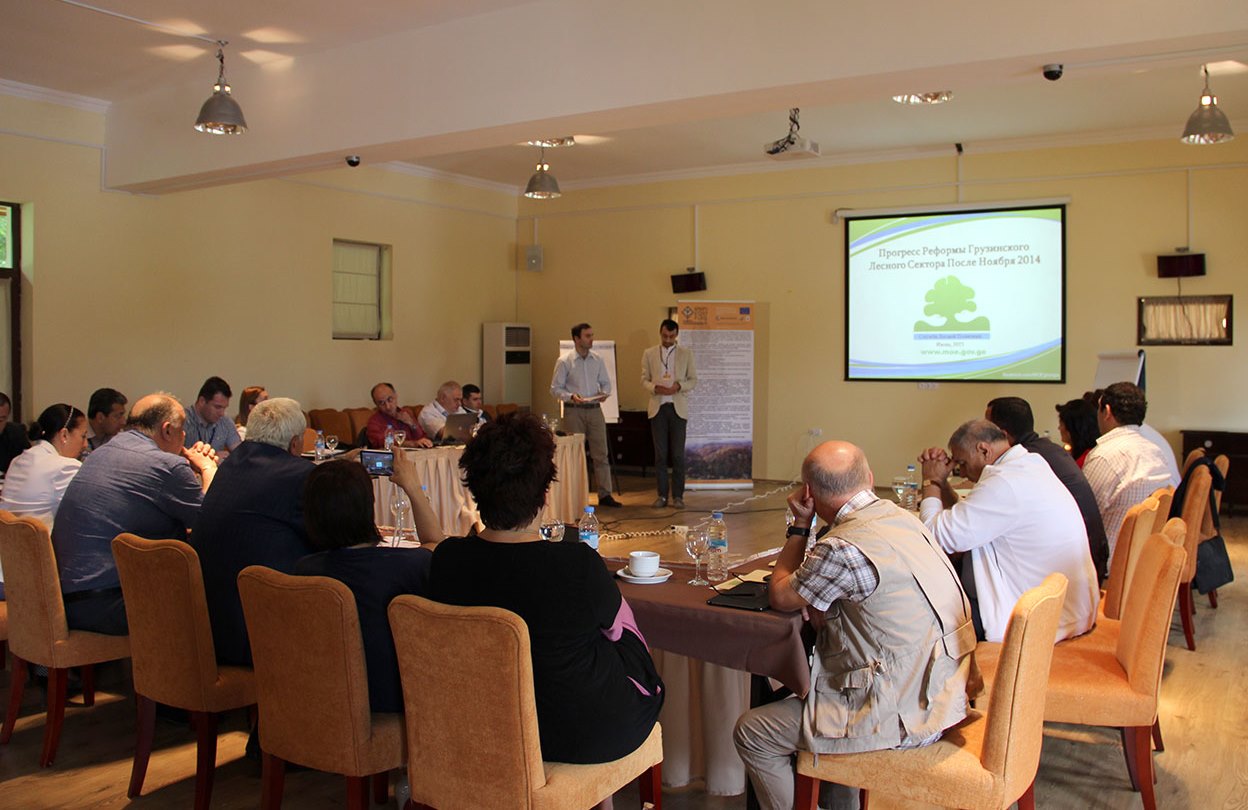Georgia makes vital changes to better protect local forests


In partnership with the European Union (EU) and the World Bank, Georgia is embarking on a new step to better protect its forests, which cover about 40 percent or three million hectares of the country’s territory, ranging from floodplain forests along the Black Sea coasts to sub-alpine stands.
Inadequate harvesting and management practices, uncontrolled grazing, illegal logging (causing deforestation), fires, spread of insects and diseases are the key challenges facing Georgia’s forestry sector.
To overcome these challenges Georgia is preparing a new Forest Law, supported by several organisations including the National Forestry Agency of Georgia, the EU and the World Bank, which has supported Georgia’s forestry sector since the end of the past century.
Insight into Georgia’s forest protection
The first and main goal of Georgia’s National Forestry Agency is to develop the structure of the Agency so it can better complete its activities. The Agency’s newly appointed leader Tornike Gvazava said more effort was now being put on conservation and activities to protecting and support Georgia’s forest had increased 10-fold recently.
"There are only nine regional offices in Georgia that serves forests, which is not enough. On the other hand there is lack of professionals, labour force and foresters. Today only several foresters work in the Agency. I am going to find professionals in this area and invite them to the Agency to work all together on reviving Georgian forests,” said Gvazava.
He said Georgian forests had been forgotten about and the sector not been given the attention it deserved for the past 25 years, and results of forest protection activities mainly became evident 30-40 years after implementation. However Gvazava believed it was never too late to start activities and he was optimistic about the future condition of Georgian forests.

Forest in Svaneti. Ushba, one of the most notable peaks of the Caucasus Mountains located in the Svaneti region of Georgia. Photo by N. Alavidze/Agenda.ge
Currently there is no official data about Georgia’s forests as relevant surveys have not been conducted. However based on the Agency’s observations, Georgian forests are mainly "very old” and trees were suffering from several types of diseases; the main one being Chestnut Blight. Hope remained for Georgia’s younger forests but these areas needed support and care to ensure young trees avoided catching diseases.
"Currently we are working on establishing a Forest Code. In 2012 Georgia adopted a forestry policy document. Now it is important to create a proper legislative base which will be adjusted to the document,” said Gvazava.
"At the same time, we are going to conduct a forest census to find out the problems and then we will start fighting against them. Georgian forests need to be recovered. Massive forest cuts cause ecological problems. Today we see many landslides and other natural disasters in our country, and the number of these are growing and growing. We should find the reasons within ecological problems and once we do we can address them,” Gvazava added.
How does the World Bank support Georgia’s forests?
To overcome the challenges facing Georgia’s forestry sector, there needed to be more public awareness of environmental issues facing the forestry sector, as well as more participation, says the World Bank.
Forest protection was one of the things Georgia must address within its European integration process. Furthermore, if Georgia wanted to export its forest products abroad it must implement all EU regulations, including certifying forest products.
After years of cooperation, in 2008 Georgia became a beneficiary of the European Neighborhood and Partnership Instrument (ENPI) Forest Law Enforcement and Governance (FLEG) National Program, which was created to combat the threats posed to forests by illegal logging, trade, poaching and corruption.

Forests cover about 40 percent or three million hectares of Georgia’s territory. Photo by N. Alavidze/Agenda.ge
Through this project seven countries within Europe and Central Asia are uniting to help each other improve forest sector management. The Program is being financed by the European Union and EU and administered by the World Bank, the World Wide Fund for Nature (WWF), and the International Union for Conservation of Nature (IUCN).
The first stage of the FLEG program saw Georgia receives technical assistance to develop new forest legislation, support decentralisation of forest management, encourage sustained forest use by local communities and addressing the spreading of forest diseases.
Stage I has been successfully completed and now the second stage is currently being implemented; in this stage a Memorandum of Collaboration should be signed between the forestry sectors of Georgia and Armenia.
"The first stage of ENPI FLEG was very successful in which Georgia received technical assistance to design normative and legislative acts. Forestry sector representatives hosted trainings to improve their skills and knowledge,” said ENPI FLEG II Program Coordinator for Georgia Darejan Kapanadze.
"The second stage’s specific is the same. Now legislative processes are in focus. A new forest law should be created in Georgia. This is one of the obligations that Georgia has within the Euro integration process,” she said.
Georgia and Armenia team up to protect borderline forests
Georgian and Armenian forestry experts took part in the second phase of round table discussions on June 9, 2015 which was an important milestone towards the planned Memorandum of Collaboration between the countries. The Memorandum was believed to help the countries join efforts to protect and better manage their forests.
"The first round of bilateral talks of Armenian and Georgian foresters held in Armenia in the fall of 2014 was the initial crucial step towards establishing long-lasting and sustainable collaboration between the forestry sectors of the two neighboring countries,” said Gvazava, who highlighted the importance of support to the two countries in building a strong partnership and developing synergy to improve forest management provided under the FLEG II program.
Gvazava believed the Memorandum would be signed next time the delegations meet, as until now the sides have only discussed the details of the agreement.
When signed, Armenia will be the first country to sign a collaboration agreement with Georgia to and establish a direct bilateral relationship in forest protection.

Georgian and Armenian forestry experts took part in the second phase of round table discussions about signing the Memorandum of Collaboration.
Meanwhile Kapanadze said the Memorandum would serve as a practical tool for joint work of practitioners for forest sector.
"This would indeed benefit both sides,” she said, adding, "because neither ecosystem in general, nor forest pests or calamities like fire respect state borders. There are challenges that call for the joint response and FELG Program may be a good vehicle for developing synergy between the countries covered by this Program.”
She noted Georgia and Armenia went through similar economic hardship in the 1990s, with both countries experiencing drastic shortage in energy supply as well as a period of poor governance and enforcement during the difficult transition to market-driven economy. She said forests in both countries suffered from uncontrolled forest harvesting, which included extraction of fire wood for survival as well as illegal harvesting of timber.
"Sustainable supply of fire wood to rural communities, preventing forest damage from uncontrolled grazing, ensuring long-term sustainability of timber production, and restoration of degraded forest stands remain pressing problems for Armenia and Georgia. This is why the FLEG Program supported foresters and forest managers of these two countries in working out common approaches to issues and exchanging success stories for their replication and scaling.”
 Tweet
Tweet  Share
Share